教学设计

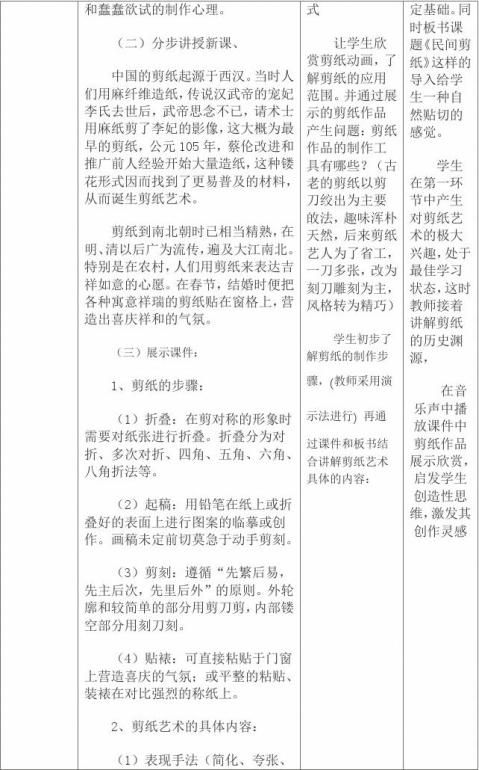
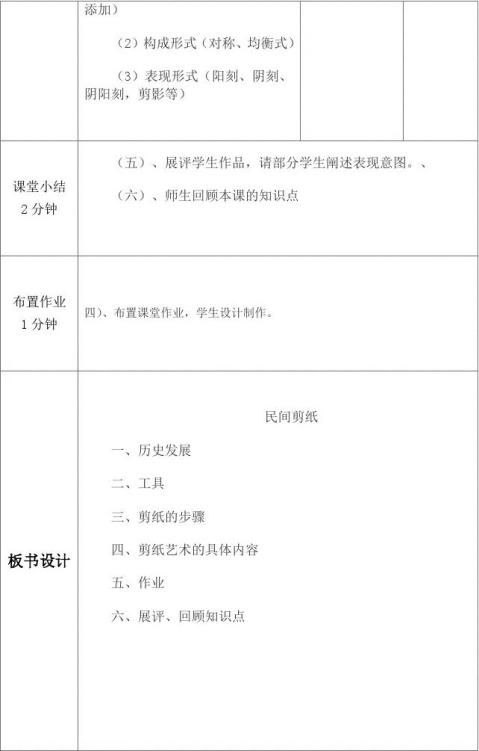
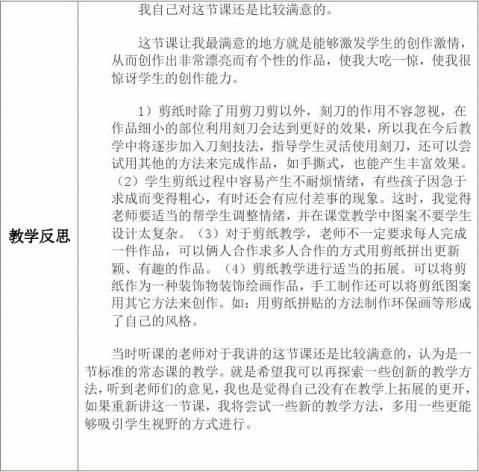
第二篇:模板 教学设计与反思
I. Teaching Contents 教学内容
Unit 16 Scientists at Work (SEFC Book 1B)
Reading: Franklin’s Famous Kite Experiment
(全日制普通中学教科书(必修)人教版高一英语(下)第十六单元《科学家在工作》的阅读部分《富兰克林的著名风筝实验》) II. Design of Teaching Objectives 教学目标设计(三维目标)
1.Knowledge objectives 知识目标
Make the students master the following words,phrases and sentence pattern.(让学生掌握下列单词、短语和句型。)
(1)Important words(重点单词):
conduct, charge, shock, prove, tear, fasten, explain, appear
(2) Important phrases(重点词组):
do an experiment, a great deal, tie?to?,stop?from?
(3)Important sentence pattern(重点句型)
Having realised that I could use?,I decided to do an experiment.
2.Ability objective能力目标
Improve the students’ reading ability through reading activities.(通过系列阅读活动提高学生的阅读理解能力。)
3.Affective objectives 情感价值目标
(1)After Learning the passage, the students are expected to know about some famous scientists and their inventions and train the students’ qualities of science.
(通过本节课的学习,让学生了解著名科学家及其发明,培养学生的科学品质。)
(2)Enable the students to know the serious attitude towards science.(让学生了解科学的严谨态度。)
III. Teaching Important Points(教学重点)
1.Learn the words and phrases listed above.
(学习上列单词和短语。)
2.Enable the students to improve their reading compre -hension. (提高学生的阅读理解能力。)
IV. Teaching Difficult Points(教学难点)
1.Understand the following sentence correctly.
(正确理解下面句子。)
Having realised that I could use a kite to attract lightning,I decided to do an experiment.
2. How to help the students understand the passage better.
(怎样帮助学生更好地理解这篇课文?)
V. Teaching Methods(教学方法)
1.Task-based method to make students interested in what they will learn.(任务型教学法)
2. Fast reading to get the general idea of the passage.(略读法)
3. Careful reading to get some detailed information.(细读法) VI. Teaching Aids:(教学辅助手段)
1
1. A blackboard (黑板)
2. A tape-recorder (收录机)
3. A projector and a computer for multimedia (投影仪、多媒体) VII. Teaching procedures (教学程序)
Step I Lead in (3 minutes)(引入,3分钟)
教师活动:呈现四幅学生在实验室作实验的图片让学生观察。 学生活动:Describe what you see in the picture.
(描述你在图片中所看到的。)
设计目的:激发学生的学习兴趣,让学生主动参与。
Step II pre-reading (3minutes)(读前,3分钟)
Today we come to the Reading. It’s about Franklin’s kite experiment. As we all know, Benjamin Frankin is a famous politician. But today we will read a passage about him as a scientist. We should learn about his serious attitude towards science. Let’s see how Franklin made his famous electricity experiment by flying a kite.
教师活动:老师问学生Do you have the experiences of flying a kite?
Have you ever made a kite by yourself? Why do you
often go out to play kites?
(你放过风筝吗?亲手作过风筝吗?为何经常出去放
风筝?)
学生活动:学生分组把自己的想法汇报给组员。
设计意图:(1)激活学生已有的信息,使学生具备摄入新知识的 2
心理定势。
(2)激发学生的学习兴趣。
(3)帮助老师引入课文的主题。
Step III. While-reading(14minutes)(阅读,14分钟)
1. Fast reading(4minutes)(快速阅读,4分钟)
Ask the students to read the passage quickly and match the paragraphs with the main ideas(On the screen).
教师活动:教师用投影仪展示出下面问题:
Paragraph 1
Paragraphs 2-3 The Tip of doing the experiment.
Introduction to Franklin’s experiment. The process of the expreiment. Paragraphs 4-6
学生活动:学生快速浏览课文,了解课文大意。
设计意图:训练学生快速阅读,归纳各段落的中心意思的能力。
(Skimming for the main idea)
参考答案:
Paragraph 1
The Tip of doing the experiment. Introduction to Franklin’s experiment. The process of the expreiment. Paragraphs 2-3 Paragraphs 4-6
2. Careful reading (10minutes)(细读,10分钟)
(1)教师活动:要求学生认真阅读课文,寻找相关信息: ① List all the materials that are needed to make a kite.
(列出制作风筝所需材料)
3
② List what are needed to do the same kite experiment as Franklin did.(列出作富兰克林同样的风筝实验所需的物品。)
③ Get the students to read the text and then decide whether the following statements are true(T) or false(F).
a. In 1752, scientists already knew what electricity is.( )
b. Franklin was helped by a friend to do the experiment.( )
c. Franklin made the kite of silk because wet silk does not conduct electricity.( )
d. A condenser was used in the experiment to store electricity.( ) e. The key tied to the string was put into the door to stop the kite from flying away.( )
参考答案:
a. T b. F c. F d. T e. F
学生活动:认真阅读课文完成任务,然后向全班汇报。
设计意图:训练学生快速查读细节、捕捉信息的能力。(Scanning
for detailed information)
(2)教师活动:用多媒体演示富兰克林风筝试验的flash动画制作。 学生活动:填写Science Report表格
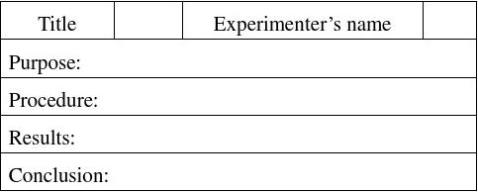
设计意图:训练学生如何写科学报告。 4
Step IV Post-reading(6minutes)(读后,6分钟)
教师活动:教师展示一些具有归纳总结性的问题:
① Why is the kite made of silk better than the one
made of paper?(为什么丝制风筝比纸制风筝好?)
② Do you think Franklin’s experiment was dangerous?
And why?
(你认为富兰克林的实验危险吗?为什么?)
③ What do you learn from this experiment?
(从这个实验中你学到了什么?)
学生活动:学生思考并讨论上述问题,然后向全班同学汇报。
设计意图:①帮助学生进行课堂反思,自己学到了些什么知识;
②学生收集课文中没有解决的问题,以便课后进一步
讨论。
Step V Language study(7minutes)(语言学习,7分钟)
There are some useful words and expressions the studeuts should
learn to use in the passage:(本课中学生应学会使用的单词和习惯表 达:)
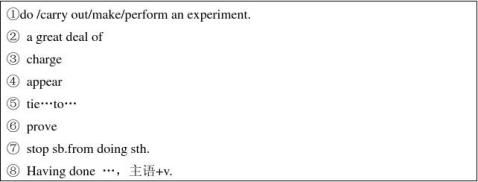
5
Step VI Litening and Consolidation (4minutes 听课文,4分钟)
Play the tape for the students to listen and follow. Pay attention to the pronunciation ant intonation.
教师活动:教师放课文录音带
学生活动:学生小声跟读课文,并注意语音语调。
设计意图:让学生更进一步巩固课文内容,并训练其语音语调。 Step VII Discussion and Homework(3 minutes)(讨论和作业布置,3
分钟)
1、为了培养学生的科学品质,让学生思考讨论下列问题:
What qualities do you think are most important for a scientist?(你认为对于科学家来说哪些素质很重要?)
2、Write a science report for an experiment that you have done in your physics or chemistry classes and use the chart above as a guide.(写一篇科学报告。)
6
VIII、The Design of the Writing on the Blackboard(板书设计)
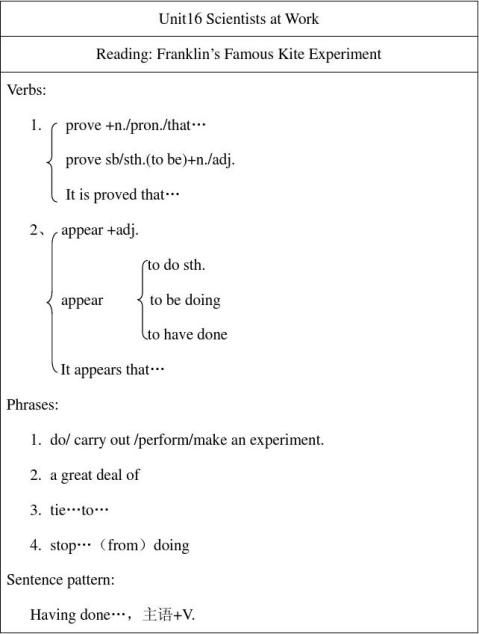
IX、教学反思
这堂课基本做到了把课堂让给学生,让学生在自主、合作、探究的气氛中愉快度过,既顺利完成教学任务,又促进其情感教育。这堂 7
课的完成使我感到欣慰,值得我深思。
首先,良好的导入是整个课堂成功的一半,它能够紧紧抓住学生的心理和兴趣,使课堂教学更具趣味性和艺术性。总体来说,这节课的导入是比较成功的,切入点是让学生观察在实验室作实验的图片,激发了学生的学习兴趣。这不由得让我想起一句话“教有趣,必乐学”。学习兴趣的形成有利于激发学生的学习动机,促进学生智能的发展。
其次,教学内容设计要符合本班学生的实际情况,难度适中,尽量满足不同类型和不同层次学生的要求。在任务的设置中应充分考虑学生是否能够完成。本堂课的细节理解部分难度合适,大多数学生都能顺利完成。
再次,只有师生处于平等地位,学生的主体性才能得到发挥;只有使课堂交际化,师生才能融合在智力与情感的交际过程中。在整个教学过程中,我始终坚持以学生为主体实施教学,创设了多种形式的交际活动。
但是,本堂课也还存在一些不足,需要加以改进:
1、由于本堂课任务多,容量大,导致完成任务时间较紧,今后应注意教学步骤间的紧密衔接,充分体现教师主导、学生主体作用。
2、思考讨论题设置较好,但难度较大,导致很多学生没能完成任务。今后应多引导,降低难度,留足讨论时间,鼓励学生大胆开口。
3、本节课注重对课文的整体理解和对材料的挖掘,但忽略了一些基础语言知识和句子结构的掌握。今后应该注意篇章文意与语言知识结构的有机结合。
8
教学目标设计的单项说明
一、教学目标
1.Knowledge objectives 知识目标
Make the students master the following words,phrases and sentence pattern.(让学生掌握下列单词、短语和句型。)
(1)Important words(重点单词):
conduct, charge, shock, prove, tear, fasten, explain, appear
(2) Important phrases(重点词组):
do an experiment, a great deal, tie?to?,stop?from?
(3)Important sentence pattern(重点句型)
Having realised that I could use?,I decided to do an experiment.
2. Ability objective能力目标
Improve the students’ reading ability through reading activities.(通过系列阅读活动提高学生的阅读理解能力。)
3.Affective objectives 情感价值目标
(1)After Learning the passage, the students are expected to know about some famous scientists and their inventions and train the students’ qualities of science.
(通过本节课的学习,让学生了解著名科学家及其发明,培养学生的科学品质。)
(2)Enable the students to know the serious attitude towards science.(让学生了解科学的严谨态度。)
9
二、教学目标设计的主要依据
根据全日制普通高中英语教学大纲和教材的要求以及本课课型特点,并结合所教学生的实际情况,确定本堂课的教学目标。
1、学生分析
本节课的教学对象是高中一年级的学生,他们已具备一定的物理、化学等学科的实验知识,对科学发现充满了浓厚的兴趣,同时他们有着丰富的想象力和活跃的思维,具有一定的分析和解决问题的能力,已掌握相关的认知策略,如分析、想象、推理、归类、总结、记忆等。学生学习主动性较强,能够积极配合老师的指令完成本堂课的学习任务。
2、教材分析
本单元的中心话题是“科学”,具体涉及“科学家”、“科学实验”、“科学发现及应用”等,以此培养学生的科学意识和精神。在第一课时里,学生已经围绕中心话题谈论了科学发明给人类带来的好处及弊端,这为本节课的阅读教学做好了很好的铺垫。本课“Franklin’s Famous kite Experiment”属第二课时,由“读前”、“阅读”和“读后”组成。
3、本课课型为阅读课。
4、本节课教学目标设计还依据《普通高中英语课程标准》的相关理念。在教学过程中,突出学生的主体地位,引导学生主动地获取知识,科学地训练技能,并注重师生之间、生生之间的相互交流等。 10
三、教学目标达成的思路:
1、教学流程:


2、师生互动: 教师活动:
学生活动:
11
